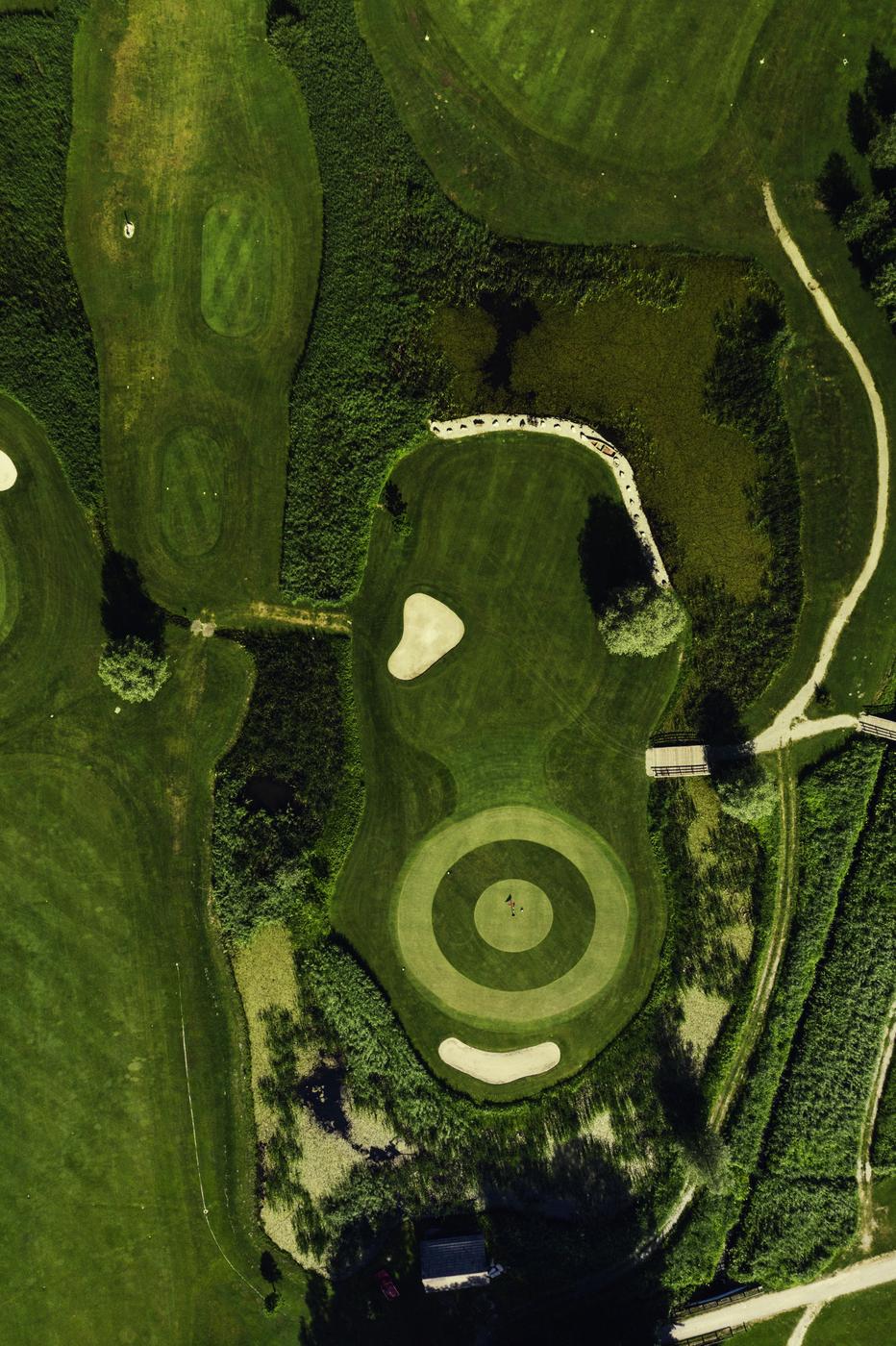We are always on your case to give golf a fair chance – today we claim your ears for our crisp golf glossary!
If you’ve successfully performed your first swings and have a chic outfit for the course, all you really need is the right wording that won’t immediately expose you as a “rabbit” on the golf course.
Here is an overview of the most important “golf vocabulary
- Albatross: A hole played three strokes under par.
- Approach shot: The strokes used to play toward the green.
- Backspin: A ball that moves backward after hitting the green.
- Driving range: The practice area for hitting balls (usually includes pitching, chipping, and putting greens).
- Eagle: Two strokes under par.

- Honor: The player who wins the last hole (in case of a tie or first tee shot, the lower handicap decides) has the “honor” of teeing off first.
- Irons: The metal golf clubs with different angles of inclination (loft) for different distances.
- Fade: A shot in which the ball describes a slight arc from left to right in flight.
- Fairway: The lawnfläche, which is mowed short and pflegt between tee and green.
- Green: Very short cut lawnfläche around the hole where the flag is.
- Handicap: A handicap set by the playing committee for each player according to his or her skill level.
- Wood: Club with a relatively thick club head (e.g. driver) for the long shots from the tee or fairway.
- Hook: A golf ball that makes a sharp left turn after hitting the ball.
- Short game: The short shots when approaching the green (pitching and chipping) and putting.
- Pitch: Ball position where the ball comes to rest after the shot. Reading the green: Close examination of the green for texture, stroke, and slope.
- Pull: A ball that lands to the left of the target.
- Push: A ball that lands to the right of the target.
- Putt: The shot that is made on the green to the hole.
- Putter: The club used to putt into the hole on the green.
- Putting green: A practice green on which putting is practiced.
- Rough: In contrast to the fairway, grass that has not been cut.
- Round: The game of golf over 18 holes.
- Gift: In practice rounds, a very short ball may be “gifted,” meaning the player does not have to finish putting, but must still take credit for this “gifted” stroke. This is not allowed in normal tournaments, which are counted by strokes or Stableford.
- Tee: A tee is a small piece of wood on which you place your ball when teeing off. The tee (small piece of wood) may only be used on the tee. The tee is also the place from which you play your first ball per hole. The tee is marked by balls, stones, or similar.
- Teetime: Tee time for the first tee shot.

- Topping: The ball is hit in the top half and thus fliegs all the way flach.
- Bogey: A stroke over par.
- Divot: A divot on the fairway knocked out by the golf shot.
- Flight: Originally the term for the flight distance of the ball. Also used in German for a group of a maximum of four golfers playing together.

- Fore: International warning call to alert players or spectators to the danger of a golf ball heading toward them.
- Green fee: Playing fee per round on the golf course of which one is not a paying member.
- Par: golf hole stroke and measurement unit. Par 3: maximum length of 228 meters, par 4: between 229 and 434 meters, and par 5: from 435 meters from tee to hole.
- Pitch: A short high shot on the green to the flag.
- Stableford: Method of counting a round of golf in which those points are counted that correspond to one’s handicap per hole. A handicap-36 player, for example, gets two points ahead per hole, which means that he plays his handicap when he is two strokes over par per hole. For an HCP-18 player, he is only allowed to play one stroke over par per hole, i.e. 18 strokes over par per round.
- Penalty stroke: A penalty stroke is added to the score like a normal stroke.
- Wedge: Iron used to hit short shots. There are two types of wedges: sand wedges and pitching wedges. The sand wedge is used both for hitting out of the bunker and for very short approach shots. The pitching wedge is also used for short approaches.
If you’re still not sure whether you should venture onto the course – don’t think twice, life is too short for later, and trying new things is what makes life so exciting and varied!







